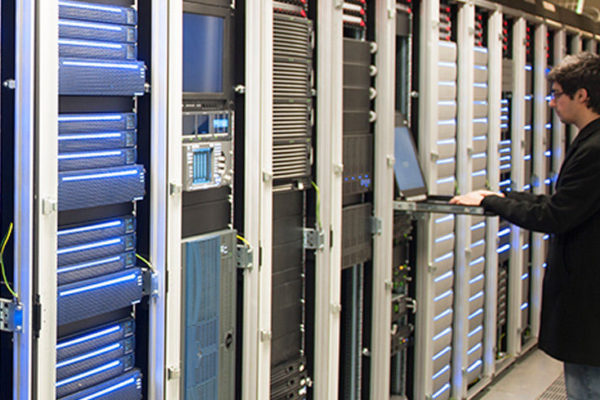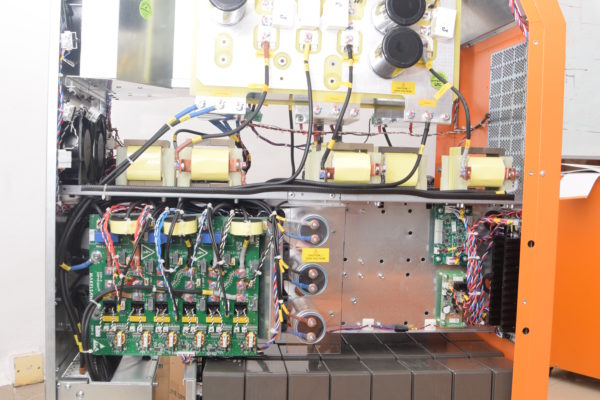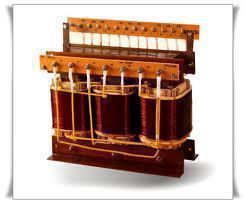Maximizing Your UPS Battery Life: Everything You Need to Know
Imagine working on an important project when suddenly—boom—a power outage strikes! Without a reliable backup power system, your work, data, or even critical equipment could be at risk. This is where Uninterruptible Power Supply (UPS) systems come in, ensuring seamless power continuity during outages, fluctuations, and surges.
At the core of every UPS system lies its battery—the powerhouse responsible for storing and delivering backup power when you need it most. But like all things, UPS batteries don’t last forever. Understanding their lifecycle can help you prevent unexpected failures, reduce downtime, and extend their lifespan.
In this guide, we’ll break down:
✅ The UPS battery lifecycle and its key stages
✅ Factors that affect battery longevity
✅ Proven maintenance tips to maximize efficiency
✅ How to choose the right UPS battery for your needs
Let’s dive in!
1. The UPS Battery Lifecycle: From Installation to Replacement
A UPS battery goes through several stages during its lifetime. Here’s a breakdown of what happens from the moment it’s installed to when it needs replacement:
a. Installation & Initial Charging
When you install a new UPS battery, it must be fully charged before use. This ensures it reaches maximum capacity and delivers optimal performance from the start.
b. Peak Performance Stage
Once fully charged, the battery enters its golden period, delivering stable power backup and handling charge-discharge cycles efficiently.
c. Gradual Degradation
Over time, chemical reactions inside the battery lead to a slow decline in capacity. Factors such as temperature, frequent deep discharges, and load stress speed up this aging process. You’ll start noticing shorter backup durations as the battery weakens.
d. End of Life (EOL) & Replacement
A UPS battery typically lasts 3 to 5 years, depending on usage and maintenance. As it nears the end of its lifecycle, it struggles to hold a charge, requiring timely replacement to prevent power failures.
📌 Pro Tip: Don’t wait for a complete failure—replace the battery as soon as performance declines!
2. What Affects UPS Battery Lifespan?
Several factors determine how long your UPS battery will last. Understanding and managing these factors can significantly extend its life.
a. Temperature: The Silent Killer
Excess heat is a battery’s worst enemy! High temperatures accelerate chemical reactions inside the battery, causing faster degradation.
✅ Ideal Temperature Range: 20–25°C (68–77°F)
❌ Avoid exposing the battery to direct sunlight or enclosed spaces with poor ventilation.
b. Charge-Discharge Cycles
Each time your UPS battery discharges and recharges, it undergoes wear and tear. The more cycles it completes, the faster it ages.
📌 Tip: Avoid frequent deep discharges; instead, ensure regular charging to preserve battery health.
c. Load Capacity: Don’t Overwork Your UPS
Running your UPS at full capacity all the time puts stress on the battery, reducing its lifespan.
✅ Solution: Keep the load within recommended limits to prevent excessive strain.
d. Maintenance: A Small Effort, Big Impact
Simple maintenance routines can prolong your UPS battery’s life and improve performance.
🔹 Regularly clean battery terminals to prevent corrosion.
🔹 Check for bulging, leaks, or other signs of damage.
🔹 Ensure proper ventilation around the UPS system.
e. Power Supply Quality: Smooth Power, Longer Life
Frequent power fluctuations and irregularities stress the battery unnecessarily.
✅ Solution: Use surge protectors and voltage stabilizers to reduce strain.
3. How to Extend the Life of Your UPS Battery
Want to get the most out of your UPS battery? Follow these best practices:
✔ Maintain Proper Temperature
Keep your UPS system in a cool, well-ventilated area to prevent overheating.
✔ Avoid Overloading Your UPS
Distribute power consumption efficiently and do not exceed the recommended load.
✔ Perform Regular Maintenance
🛠 Check battery terminals for dirt or corrosion.
🛠 Inspect for leaks or swelling, which signal damage.
🛠 Test backup performance periodically.
✔ Calibrate Batteries Periodically
Most UPS systems allow for battery calibration, which helps detect weak batteries early and optimize performance.
✔ Replace Batteries Before They Fail
Don’t wait for a power outage to realize your battery has died! Replace batteries as soon as performance declines to avoid unexpected downtime.
📌 Bonus Tip: Keep a spare battery handy for quick replacement when needed.
4. Choosing the Right UPS Battery for Your Needs
Not all UPS batteries are created equal! When selecting a UPS battery, consider the following factors:
🔹 Capacity Requirements: Ensure the battery can support your equipment’s load.
🔹 Backup Duration: Determine how long you need power backup in case of an outage.
🔹 Technology Type:
- VRLA (Valve Regulated Lead-Acid) – Budget-friendly, widely used.
- Lithium-Ion – Longer lifespan, higher efficiency, but more expensive.
At Actolog Solutions Limited, we offer top-tier Makelsan UPS solutions for homes, businesses, and industrial applications. Our UPS systems ensure uninterrupted power protection with premium-quality batteries.
💡 Visit actolog.com to explore our range of UPS solutions.
Final Thoughts: Stay Powered, Stay Protected
Your UPS battery is the lifeline of your backup power system. Understanding its lifecycle, managing factors that affect longevity, and following best maintenance practices can save you money and prevent critical downtime.
By investing in a high-quality UPS system from Actolog Solutions Limited, you can enjoy peace of mind, knowing your power supply is secure.
💡 Need expert advice or a tailored UPS solution?
📞 Call us at 09062830781 or 📧 Email actologng@gmail.com.
🔋 Stay powered. Stay protected. Choose Actolog!







